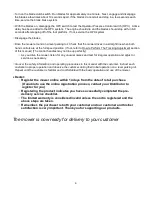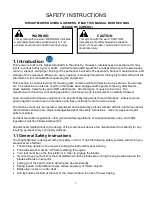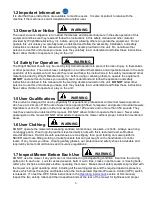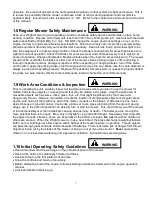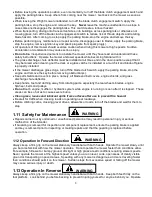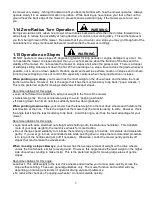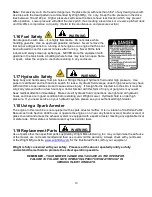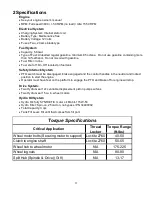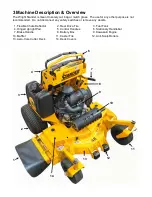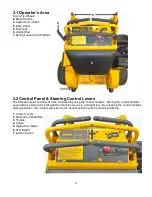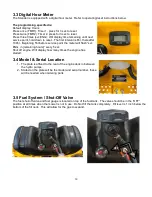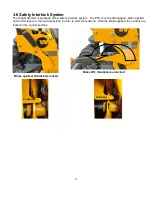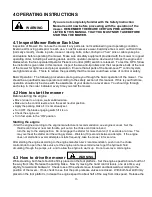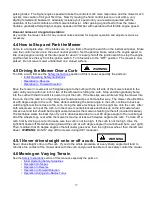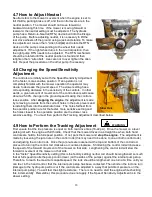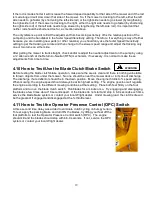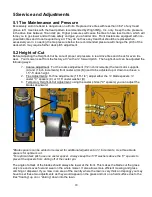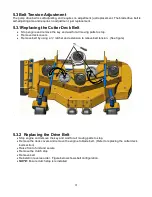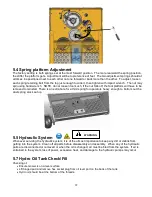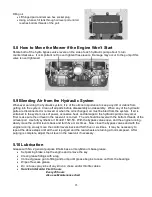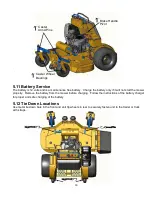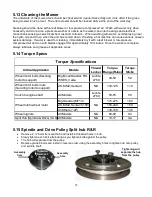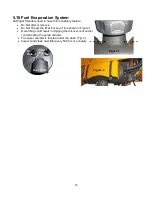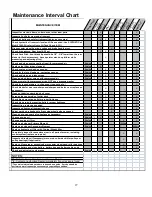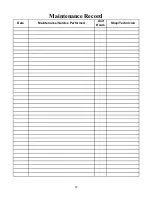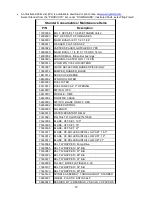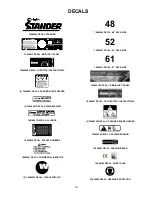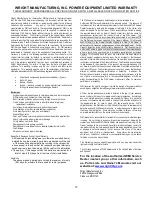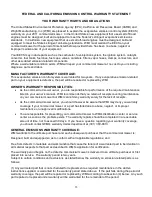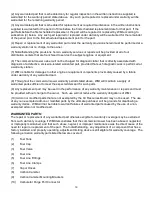
18
Slow Hole
4.7 How to Adjust Neutral
Neutral refers to the mower movement when the engine is set to
full throttle, parking brake is off, and the control levers are in the
neutral position. The mower should not move forward or
backward during this time. If the mower is moving forward or
rearward, the neutral setting must be adjusted. The hydraulic
pump has a Return-to-Neutral (RTN) device built into the linkage
of the pump. Before adjusting neutral, it is necessary to lift the
rear drive wheels off the ground using a jack and stands. To make
the adjustment, loosen the ¼” Allen bolt (A) and rotate the RTN
device on the pump corresponding to the wheel that needs
adjustment. If the right wheel turns in the neutral position, then
the right pump RTN needs to be adjusted. The RTN mechanism
should be rotated until the neutral position is found and then
retighten the ¼” allen bolt. Use care not to over tighten the allen
bolt. Repeat the procedure on the other pump if necessary.
4.8 Changing the Speed/Sensitivity
Adjustment
The controls are initially set with the Speed/Sensitivity Adjustment
in the faster, more sensitive position. If an operator is not
completely familiar with the mower operation the operator may
desire to decrease the ground speed. The slower setting has a
corresponding decrease in the sensitivity of the controls. In other
words, a given amount of movement of the control levers will cause
about a 25-30% change in the ground speed making the controls
less sensitive. After stopping the engine, the adjustment is made
by removing rod ends from the current holes in the pump levers and
reinstalling them into the alternate holes. The holes farthest from
the operator position are for the faster, more sensitive setting and
the holes closest to the operators position are the slower, less
sensitive setting. You must then perform the Tracking Adjustment described below.
4.9 How to Perform the Tracking Adjustment
First ensure that the tire pressure is equal on both rear drive tires (18-22 psi). Drive the mower on a level
parking lot with the engine at full throttle. Check that the mower drives in a straight line when both hand
controls are held to the full speed position. If not, park the mower and stop the engine. The adjustment is
made by loosening the jam-nuts on the control rods (this may need to be done to one or both control rods)
and adjusting the control rods. Once the jam-nuts are loosened at the top and bottom of the control rod
proceed to turning the control rod clockwise or counter-clockwise. Shortening the control rod will increase
the speed of the forward movement of the mower on that side. Lengthening the control rod will slow the
forward movement of the mower on that side.
In the “faster” Speed/Sensitivity setting (this is the factory setting) neither rod should be lengthened so much
that at full speed it pulls the
pump control lever (on the sides of the pumps) against the internal pump stop.
Therefore, to reach the maximum capable speed, the rods should be lengthened one turn at a time until you
can feel, in the hand control, that the internal pump stop has been contacted. Then shorten the rod one turn
(damage to the hydro pump will occur if the controls are adjusted in a way that put direct pressure on the
internal pump stop). You will feel the slight resistance. There is no need to start the engine while checking
this incrementally. Remember, this procedure does not apply if the Speed/ Sensitivity Adjustment is in the
slower setting.
A
WARNING
Summary of Contents for Stander
Page 29: ...28 Date Maintenance Service Performed Unit Hours Shop Technician Maintenance Record ...
Page 37: ...37 NOTES ...
Page 38: ...Notes ...
Page 39: ......
Page 40: ...4600X Wedgewood Blvd Frederick MD 21703 www wrightmfg com ...

